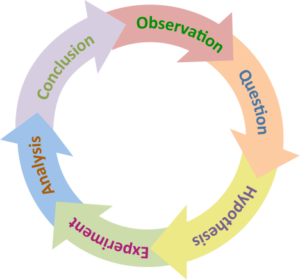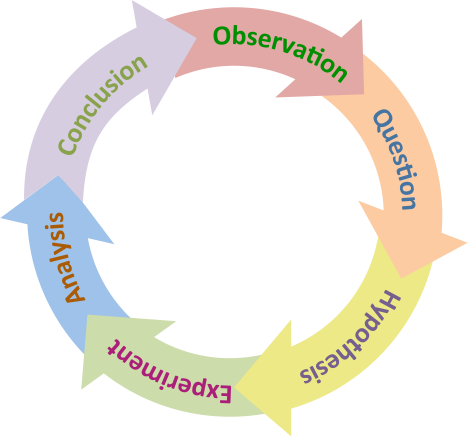Here’s the thing about setting up tracking on your website: Data is not useful unless you actually use it!
Before embarking on your web analytics journey, the first question you should ask yourself is: what am I going to do with this data?
Best answer: Improve the user’s experience on your website.
Second best answer: Improve conversion rate.
Why is conversion rate not the top priority? Because a better user experience should inherently lead to more conversions, all other things held equal (~ceteris paribus~ , if you will).
Think back to your middle school science class. Remember the scientific method? Managing a website is the perfect opportunity to bring back your investigative skills.
What are the actions you expect or hope users take? How can you collect data to track whether users take those actions? Once you have this data, how will you use it to improve the user’s experience? And after making a change, how will you recollect data to verify whether the change was in fact an improvement?

The Scientific Method
This is how you can use the basic principles of experimental design to inform your web data collection strategy and eventually A/B or multivariate testing strategy! Effectively, this process IS conversion rate optimization.
In Google Analytics (GA), the actions a user takes on a website can be tracked as ‘events.’ Event tracking is simply a way to count occurrences of an action. In GA, events can be labeled with a category, action and label parameter (we’ll touch on custom dimensions another time).
Out of the box tracking with Google Analytics
One thing to also keep in mind is that GA does automatically provide some “out of the box” tracking. Here’s a summary:
- Pageviews (by Page Path)
- Traffic sources
- Geolocation
- Technology – browser type, mobile vs desktop, etc.
- Landing/Exit pages
- Metrics like total users, total new users, sessions, average session duration, pages per session, bounce rate, average time on page, etc.
Customized tracking with Google Tag Manager
Every website is different, and the user interactions you may want to track will vary. As a basic list, here are some common actions which can be tracked via Google Tag Manager.
- Link Clicks
- Outbound
- Social
- CTAs
- Telephone
- Downloads
- Form submits
- Sign Ups
- Newsletters
- Contact
- Account creation
- Navigation clicks*
- Top
- Footer
- Video tracking
- Scroll Depth**
Advanced:
- Ecommerce
- Additional user attributes via dataLayer
- Custom dimensions – visitor ID, authenticated session, user since, etc.
Anything I missed? Let me know in the comments or by email! In future blog posts, I’ll go over how to set up this customized tracking with Google Tag Manager in more detail.
* Make sure to test that your tracking works for the mobile version of navigation menu as well
** Scroll depth tracking is only useful if most pages on site are long enough for user to actually scroll, and be sure to set up as a non-interaction event
